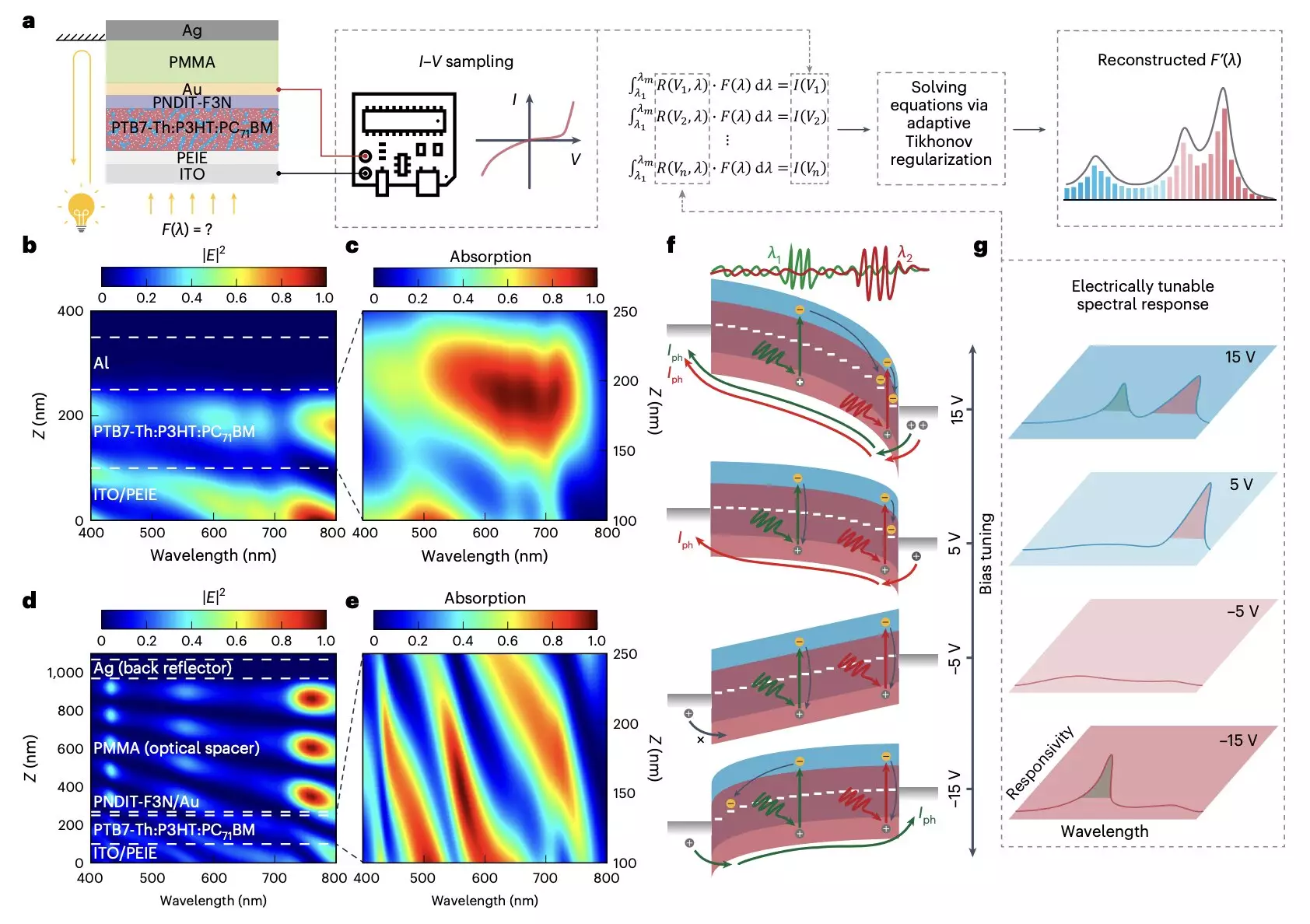Optical spectrometers are essential instruments used to produce light and measure its properties across specific portions of the electromagnetic spectrum. These devices have a wide range of applications, including aiding in the diagnosis of medical conditions, analyzing biological systems, and characterizing materials. Traditional spectrometer designs are known for their bulky and expensive nature, which restricts their use to specialized facilities such as hospitals, laboratories, and research institutes.
In recent years, there has been a growing interest among electronics engineers to develop more compact and affordable optical spectrometers that are easier to deploy on a large scale. These new devices are either based on conventional spectrometer designs or utilize arrayed broadband photodetectors along with computational algorithms to achieve portability and cost-effectiveness.
A Breakthrough in Optical Spectrometer Technology
Researchers at the Chinese University of Hong Kong and other institutions in China have recently introduced a groundbreaking micro-sized, portable, and cost-effective optical spectrometer. This innovative device, featured in a paper published in Nature Electronics, is built on an organic photodetector with a bias-tunable spectral response. The team behind this development aims to create optical spectrometers that can be utilized in portable and wearable applications, marking a significant advancement in the field.
New Design Principles
The new optical spectrometer is based on a novel method of manipulating the wavelength-dependent location of photocarrier generation in photodiodes. By incorporating a trilayer contact consisting of a transparent back contact, an optical spacer, and a back reflector, along with a Schottky diode and an organic ternary bulk heterojunction, the researchers were able to create a photomultiplication-type organic photodetector (PM-OPD). This groundbreaking design allows for the computational reconstruction of an incident light spectrum from photocurrents measured under different bias voltages, showcasing its efficiency and precision.
The team evaluated their miniaturized optical spectrometer through a series of tests and observed exceptional performance across the entire visible spectrum regime (~400–760 nm) with a sub-5-nm resolution. Furthermore, they demonstrated the potential of their design by developing an 8 x 8 spectroscopic sensor array for hyperspectral imaging, a technique that holds promise in detecting unique spectral signatures of specific objects.
Implications for the Future
The new approach introduced in this research paper opens up possibilities for the development of other micro-sized and cost-effective optical spectrometers. These devices have the potential to pave the way for cutting-edge technologies that can revolutionize research and medical practices, bringing about a new era in optical spectrometer technology.
The innovative work done by the researchers in creating a micro-sized optical spectrometer represents a significant step forward in the field of optical instrumentation. This breakthrough not only addresses the limitations of traditional spectrometer designs but also offers a glimpse into the exciting possibilities that lie ahead in the realm of optical spectrometry.


Leave a Reply